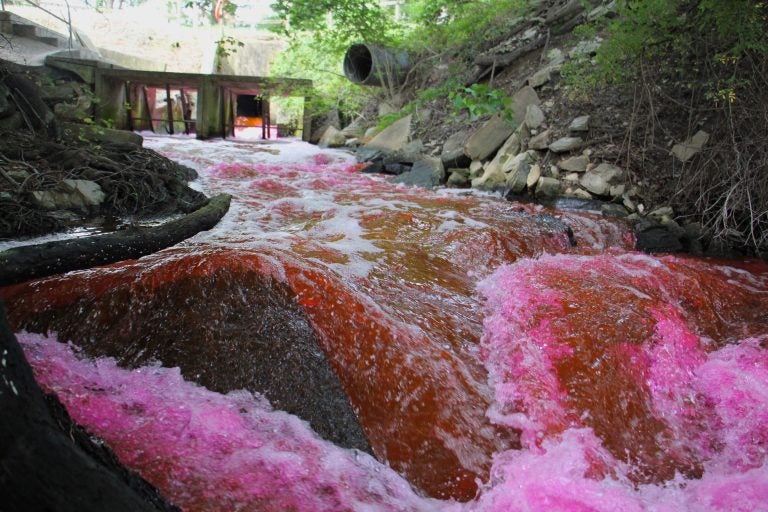Delaware dyes streams red to predict how a wastewater spill would pollute shellfish
Red dye was released for 12 hours during an exam of how a wastewater spill could affect shellfish in the Delaware Bay.

Red dye is released from the Kent County wastewater treatment plant into The Gut, a tributary of the Murderkill River which runs into the Delaware Bay. (Emma Lee/WHYY)
Scientists in Delaware are dumping dye into waterways to study how a wastewater spill could affect shellfish in the Delaware Bay.
During the weeklong water quality study, red dye will be applied to Murderkill River to evaluate the Delaware Bay’s oyster beds.
Delaware’s wild harvest oyster beds are located in the Delaware Bay. A wastewater spill would force authorities to temporarily ban harvesting until conditions return to normal.
“So the goal of this dye study is to look into and predict what those impacts to the Delaware Bay could be under an emergency situation such as a spill,” said Michael Bott, an environmental scientist with the Department of Natural Resources and Environmental Control’s Delaware Shellfish Program.
DNREC and the Kent County Department of Public Works are conducting the study for the first time in conjunction with the U.S. Food and Drug Administration.
Between midnight Tuesday and noon Wednesday, scientists released the dye at the Kent County wastewater treatment plant near Frederica. The dye then traveled through a tributary into the Murderkill River. Bott said the dye will give the water a red hue for a couple of days, but it is nontoxic.
The study will help the state evaluate how much water quality would suffer if a spill occurred, and understand which areas would be most affected. That information could guide them to determine where harvesting would need to come to a halt.
“Emergency spills can happen anywhere, so how do you respond when those events happen?” Bott said. “For shellfish, it would result in a temporary closure to the harvest, which normally lasts about three weeks. … The dye is simulating what that spill would look like, and you can measure that and look at the dilution so you can better predict where and how long these closures need to occur.”
WHYY is your source for fact-based, in-depth journalism and information. As a nonprofit organization, we rely on financial support from readers like you. Please give today.





